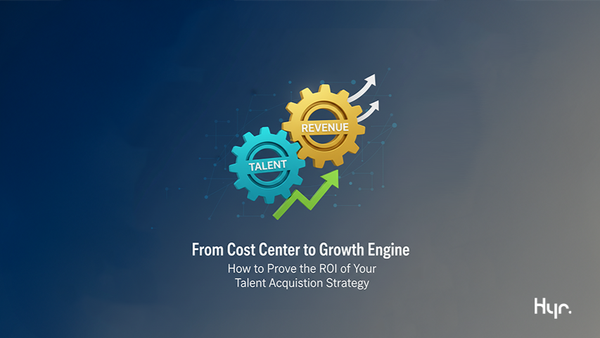The Recruiter's Q4 Playbook: How to Set the Stage for a Stellar 2026

For most of the business world, Q4 is about finishing strong. It’s a mad dash to hit annual targets and wrap up projects before the holiday slowdown. For Talent Acquisition teams, it’s often the same story—a frantic push to fill the last remaining headcount.
But the most strategic TA leaders know that Q4 isn’t just the finish line for this year. It’s the starting block for the next one.
While your competitors are winding down, you have a golden opportunity to get ahead. A well-executed Q4 doesn’t just close out the year; it builds the foundation for a dominant 2026. As former recruiters, we know this "pre-season" is where the game is truly won.
Here is your four-part playbook for turning the next three months into your biggest competitive advantage.
1. The Data Deep Dive: Audit Your 2025 Performance
You can't build a better future without honestly assessing the past. Before you finalize your 2026 strategy, you need to know what actually worked this year. Go beyond surface-level metrics like Time-to-Fill and dig into the data that tells a story:
- Source of Quality: Where did your top-performing hires really come from? Was it that expensive job board, or was it your employee referral program? Allocate your 2026 budget based on quality, not just quantity.
- Funnel Friction: Where did your best candidates drop off? If you’re losing top talent after the initial application, you have a top-of-funnel problem that no amount of sourcing can fix.
- Hiring Manager Performance: Which teams or leaders had the most efficient hiring processes? Share their best practices across the organization.
2. The Tech Tune-Up: Is Your Stack Ready for 2026?
Your tech stack should be a tailwind, not an anchor. For many, the ATS has become a system of record, not a system of intelligence. It’s a candidate graveyard that creates more manual work than it eliminates. Ask yourself:
- Does our team spend more time in the ATS screening candidates or outside of it sourcing them?
- How many hours a week are we losing to manually reviewing irrelevant resumes?
- Can we confidently say we’re giving every single applicant a fair, consistent, and objective review?
If the answers concern you, now is the time to explore adding an AI-powered intelligence layer (like Hyr) to automate the top of your funnel and turn your ATS from a database into a strategic tool.
3. The Proactive Pipeline: Go Fishing While Others Rest
The end of the year is a goldmine for connecting with passive talent. While active applications may dip, professionals everywhere are reflecting on their careers and quietly considering a "New Year, New You" move. Use this time for strategic outreach, not frantic filling.
- Warm up your existing talent pool with a "stay-in-touch" campaign.
- Engage high-potential candidates who you didn't have a role for earlier in the year.
- Build pipelines for the critical roles you know are coming in Q1.
4. The Stakeholder Summit: Align with Hiring Managers Now
Use the relative calm of the pre-holiday season to move from an order-taker to a strategic talent advisor. Schedule short, forward-looking meetings with the leaders you support. Instead of asking, "What roles do you need filled?" ask, "What business goals are you trying to achieve next year, and what talent will it take to get there?"
This changes the entire dynamic. You’re no longer just filling requisitions; you’re co-authoring the 2026 talent strategy.
By taking these steps now, you’ll walk into January with a data-backed strategy, an optimized tech stack, a warm pipeline of talent, and aligned stakeholders. While everyone else is just getting started, you’ll already be winning.
To see where your organization stands, take our 1-Minute Recruiting Maturity Assessment.





